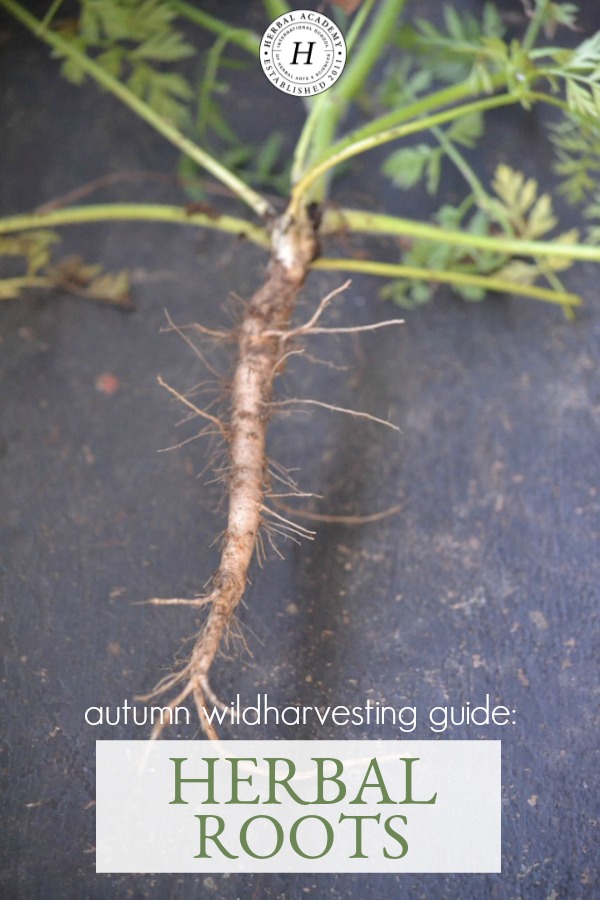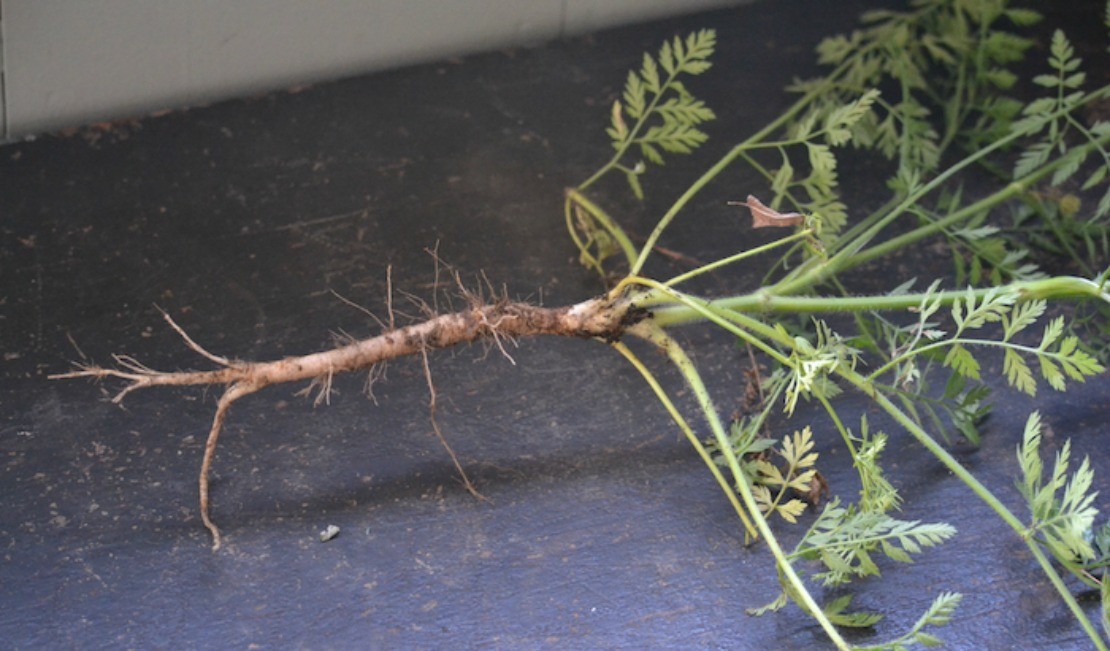
Autumn Wildharvesting Guide: Herbal Roots
Fall is the best time to harvest the roots, some berries, flowers, and cold weather herbs that we miss once the heat of summer comes in. This article will act as your fall wildharvesting guide, featuring herbal roots that are available during the season. Get the full Autumn Wildharvesting Guide, featuring fruits, berries, flowers, herbs, seeds, and roots in The Herbarium membership website.
Harvesting Herbal Roots
Roots are the first thing people think of harvesting in the fall. Once that first frost or two comes in, the plants shift their energy into the root so they can stay strong and survive the cold harsh winter to grow anew in the spring. We harvest the roots after these first few frosts, until the ground is frozen solid (in places where there is a hard freeze). The cold tells the roots to convert some of their complex starches into sugar, making them sweeter and generally giving them a more enjoyable flavor.
When harvesting roots, we generally harvest a biennial or a perennial plant, and we effectively end this plant’s life cycle. With shrubs and trees, which are perennial, they often have several root stalks branching off of the central trunk, so you can harvest a little bit from each plant without interrupting the life cycle too much. When harvesting biennials, you end the plant life cycle.
In some perennial plants, like horseradish, we can harvest the root, but cut off the crown of the plant, leaving about a half inch of root attached to the crown, and re-plant it, giving it some water to settle in. I have found that I generally get about a 50-70% re-growth rate, and that plant can continue living on and growing, while building a new root to carry it through the winter.
Some roots, like dandelion, burdock, and yellow dock, are quite brittle and easy to break off in the soil. This can be both a blessing and a curse, depending on what your purpose is. If you would like to remove dandelion from a certain area, you will want to dig well away from the plant and deep into the soil to get the whole root. If you don’t mind it coming back year after year, a normal harvest with a digging fork or hori hori is fine.
A few things to remember:
- Roots in some plants tend to collect toxins in the soil, so be sure you are harvesting from clean land well away from roadsides and coalmines.
- Some roots grow slower than others; keep the plant’s whole life cycle in mind before harvesting a root and ending its life.
- If you harvest a root on a plant that has berries or seeds, plant these and encourage propagation of your plant for years to come.
- Certain plants harvested for their roots are endangered or over harvested. These are not listed here because I feel we should either be growing them ourselves or buying from a trustworthy sustainable grower. Many have alternatives to use that aren’t as detrimental to the plant ecology. Some of these are osha, black and blue cohosh, Echinacea angustifolia, and goldenseal. Arguably Oregon grape root could be on that list as well.
- To clean roots (generally) – power spray with water, or clean in the sink using a vegetable brush to clean off the dirt.
- To tincture: I enjoy tincturing fresh herbs generally more than dry. Generally follow the directions laid out in James Green’s book The Herbal Medicine-Makers Handbook.
- To dry: Slice into thin slices (1/4 inch wide or thinner ideally) and dry below 95 degrees F.
- To store: Store in a cool, dry place out of direct light.
30+ Herbal Roots to Wildharvest in the Fall
Angelica (Angelica sinensis):
A biennial herb. Collect the root in the autumn of its first year.
Ashwagandha (Withania somnifera):
A perennial herb in warmer climates, harvest the first or second year root for use. Older plants will have less potent roots.
Astragalus (Astragalus membranaceus):
A perennial herb. Harvest the 2-4 year roots in the fall once the plant dies back.
Barberry (Berberis vulgaris):
A perennial shrub that has been planted as an ornamental and spread through out the US. Harvest the root in fall before the hard freeze. Only take a portion of the root, leaving the rest to grow and continue the plant life.
Bayberry (Myrica cerifera):
A perennial shrub that likes moist boggy areas with cold winters. Harvest the roots in the fall before a hard freeze and only take a portion of the root so the plant can live on.
Blood Root (Sanguinaria canadensis):
A perennial herb that sends off underground rootstocks that produce rhizomes. The rhizomes are what we harvest for use in herbal preparations. The rhizome can be harvested once the leaves have dried, often around late October.
Blue Flag (Iris versicolor):
A perennial herb which loves wet boggy areas in the wild, and generally spreads by root propagation, but spreads generously. This can be harvested once the fronds die back.
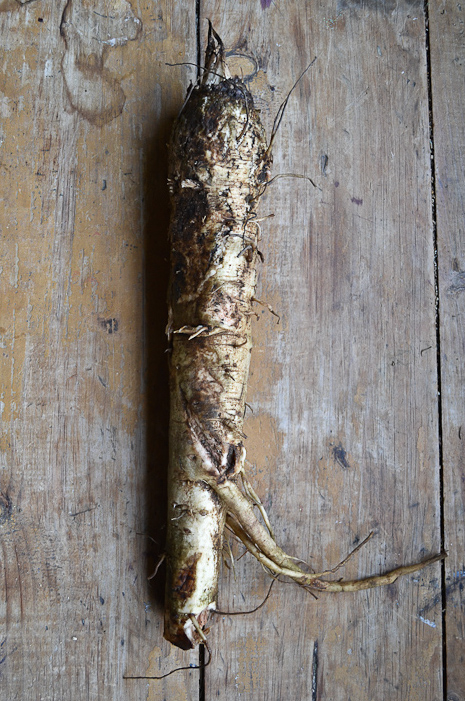
Burdock (Arctium lappa):
This prolific friend is biennial and spreads generously by seed. Harvest the first year root after the first cold snap. A quick tip about processing burdock, it is an oily root and goes rancid quickly once it is dried. This root is fantastic to enjoy fresh as food, in a tincture, or dried for short periods of time. I have found when working with the dry root that it goes off after about 4-6 months. Learn more about harvesting burdock root here.
Calamus (Acorus calamus):
Calamus likes to grow in boggy waterside areas. The rhizomes make up a thick mat that is messy to clean, but very worth the effort. Collect the rhizome after the first freeze.
Chicory (Cichorium intybus L.):
Chicory is a biennial that can sometimes act like a short lived perennial. Harvest the first year root after the first frost. The root is generally a thick tap root that can reach down into the soil by several inches. The root snaps easily so be careful while harvesting to get the whole root. Get our delicious dandelion and chicory root coffee recipe here.
Comfrey (Symphytum officinale L.):
A perennial herb. The root can be harvested in the fall after the first frost through early spring. For more reading on comfrey, visit this blog post.
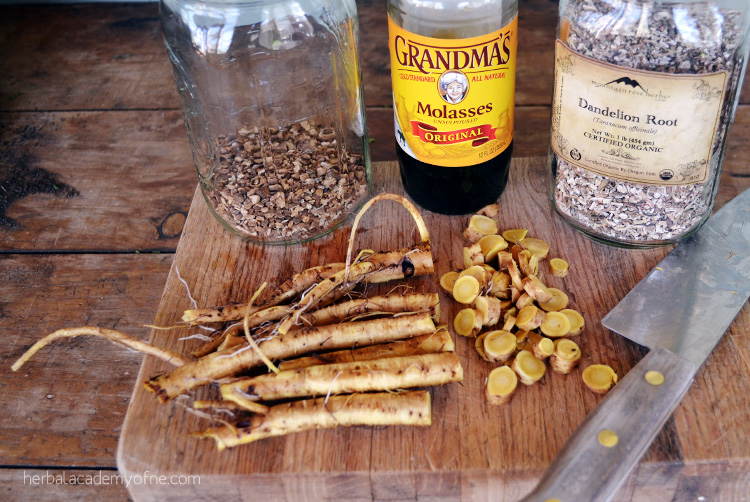
Dandelion (Taraxacum officinale):
A perennial herb. The root can be harvested in the fall once the first freeze falls and through the spring until the first flower blooms. Read more about dandelion here.
Echinacea (Echinacea spp.):
A perennial herb. Harvest the 3-5 year roots from the ground after the first frost and before the first snow.
Elecampane (Inula helenium):
A perennial herb. Harvest the second year root after the first freeze and before the first snow.
Garlic (Allium sativum):
Technically a perennial that we treat as an annual. Harvest the bulb when the leaves start to die back, but before they are completely brown and brittle.
Gentian (Gentiana spp.):
A perennial herb. Harvest the rhizome in the fall once the leaves have died back in the fall.
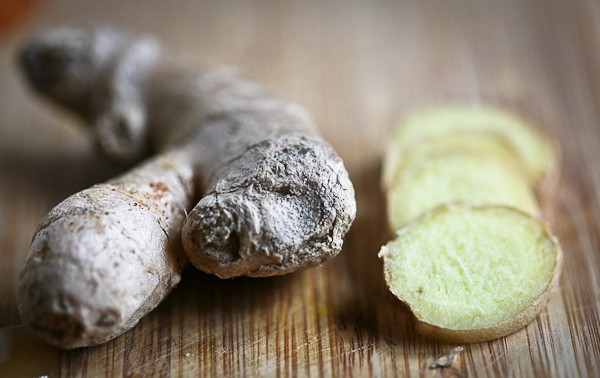
Ginger (wild) (Asarum canadense):
A hardy perennial herb that grows deep in forests on the east coast. This herb is not related to the ginger we commonly think of (Zingiber officinalis.) Dig up rhizome in fall after leaves have shriveled and dried. More reading on ginger can be found here.
Gravel Root (Eupatorium purpureum):
A perennial herb that grows throughout North America in moist, poorly drained, alkaline soil. Harvest the root in autumn after the flowers have gone to seed. The crowns of this plant can be divided and re-planted after the bottom of the root has been harvested, to continue the life of the stand.
Horseradish (Amoracia rusticiana):
A perennial herb. Harvest the root after the first freeze or in the early spring when the plant needs to be divided. Cut off a portion of the root connected to the leaves and re-plant to insure more horseradish for next year. More about horseradish can be found here.
Marshmallow (Althea officianlis.):
A perennial herb. Harvest in late fall near marshes, bogs, or damp meadows.
Mallow, common (Malva neglecta):
Common throughout the south and Midwest, this common mallow does well in dry disturbed soil. Harvest the root any time, for a sweeter root harvest in the fall after the first hard freeze.
Mullein (Verbascum thapsus):
A biennial herb. Harvest the first year root after the first frost and throughout the winter until spring when the stock starts to form.
Nettle (Urtica dioica):
A perennial herb. Harvest the root any time between the first killing frost of autumn into early spring before the plant starts to leaf out. For more reading on nettle, visit this post.
Oregon grape (Mahonia spp.):
A perennial herb. Harvest in late fall or early winter after the seeds have developed and fallen to the ground. Feel free to assist with this as Oregon grape is quickly becoming threatened by overharvesting. Note: this plant is on the United Plant Savers’ to-watch list. Please do not dig up roots in areas where this plant does not readily grow.
Parsley (Petroselinum crispum):
A perennial herb. Harvest the 2nd and 3rd year root after the first killing frost. The leaves can still be living when the root is harvested and used for food or herbal preparations.
Poke Root (Phytolacca americana):
An herbaceous perennial herb. Harvest in late autumn after the above ground parts have died off. Wear gloves while harvesting and processing poke to avoid toxicity from dermal absorption.
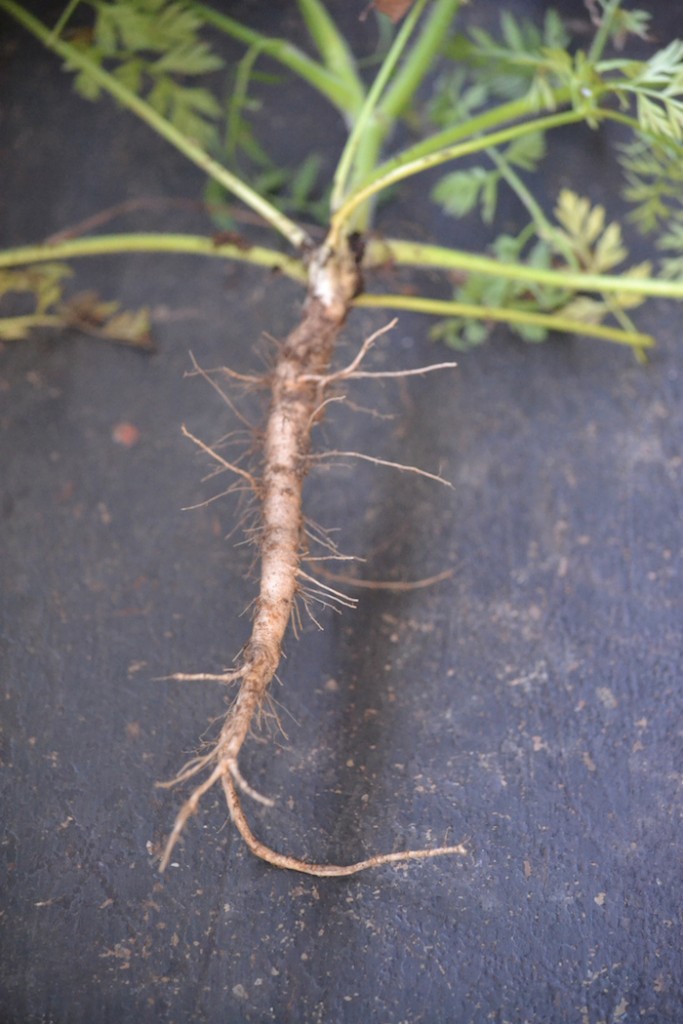
Queen Anne’s Lace (Daucus carota):
A readily seeding biennial. Harvest the first year root in the fall after the first frost.
Red root (Ceanothus spp.):
This group of plants is perennial, and can range from small shrubs to shrub like trees, depending on the location. All red roots are a Ceanothus species, but not all Ceanothus are red root. If the root is red, it is probably a good herb to use. Find a local plant guide to help determine what is right for you. Harvest the roots between the first killing frost and the first emerging spring leaves.
Teasel (Dipsacus fullonum):
A biennial. Harvest the first year root after the first hard freeze. Wear gloves as the leaves are spikey and can be hard on the hands.
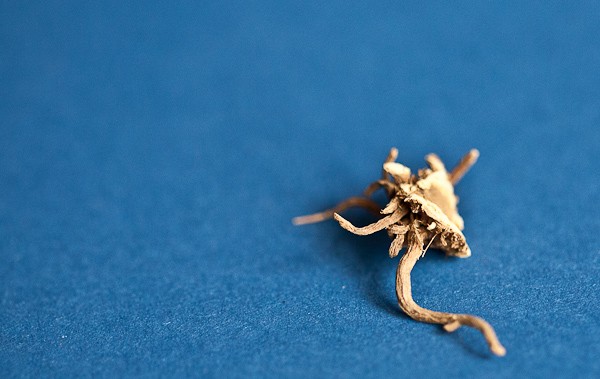
Valerian (Valeriana officinalis):
A perennial. Harvest the root after the first hard freeze, through the winter until it starts sprouting in the spring. More about valerian here.
Yellow Dock (Rumex crispus):
A readily seeding herbaceous biennial. The root grows thick, deep, and is one of the harder roots to harvest. Dig deeply around the root and use the harvesting fork to hopefully get the aromatic yellow root out of the ground. This is more easily harvested when the soil is wet. Learn more about harvesting yellow dock here.
This article has been excerpted from The Herbarium’s Autumn Wildharvesting Guide by Amanda Klenner. The Herbarium is an online collection of herbal resources and plant monographs for herbalists who want to continue their herbal education. To learn more about The Herbarium membership visit the website.
